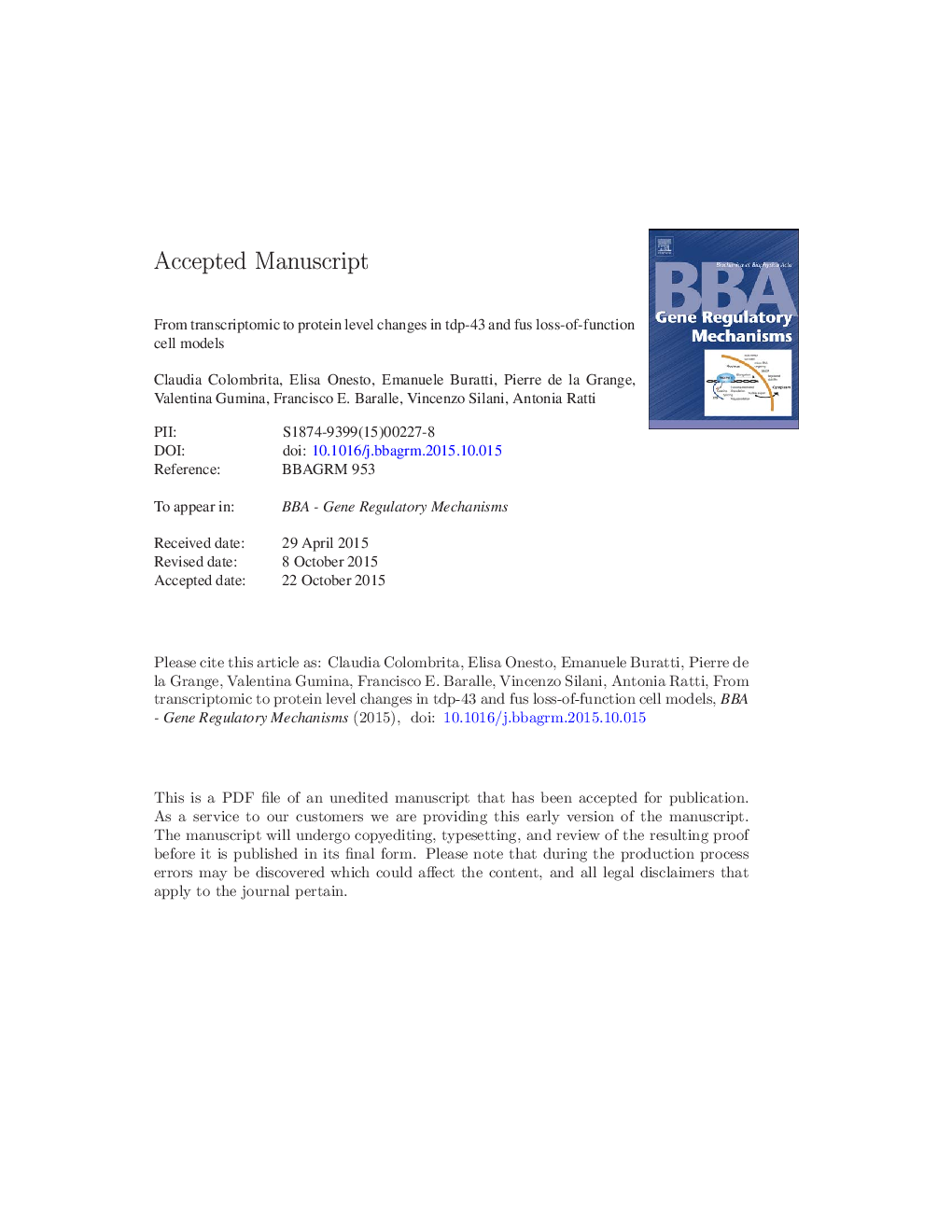| Article ID | Journal | Published Year | Pages | File Type |
|---|---|---|---|---|
| 8300453 | Biochimica et Biophysica Acta (BBA) - Gene Regulatory Mechanisms | 2015 | 38 Pages |
Abstract
The full definition of the physiological RNA targets regulated by TDP-43 and FUS RNA-binding proteins (RBPs) represents an important issue in understanding the pathogenic mechanisms associated to these two proteins in amyotrophic lateral sclerosis and frontotemporal dementia. In the last few years several high-throughput screenings have generated a plethora of data, which are difficult to compare due to the different experimental designs and models explored. In this study by using the Affymetrix Exon Arrays, we were able to assess and compare the effects of both TDP-43 and FUS loss-of-function on the whole transcriptome using the same human neuronal SK-N-BE cell model. We showed that TDP-43 and FUS depletion induces splicing and gene expression changes mainly distinct for the two RBPs, although they may regulate common pathways, including neuron differentiation and cytoskeleton organization as evidenced by functional annotation analysis. In particular, TDP-43 and FUS were found to regulate splicing and expression of genes related to neuronal (SEPT6, SULT4A1, TNIK) and RNA metabolism (DICER, ELAVL3/HuC, POLDIP3). Our extended analysis at protein level revealed that these changes have also impact on the protein isoform ratio and content, not always in a direct correlation with transcriptomic data. Contrarily to a loss-of-function mechanism, we showed that mutant TDP-43 proteins maintained their splicing activity in human ALS fibroblasts and experimental cell lines. Our findings further contribute to define the biological functions of these two RBPs in physiological and disease state, strongly encouraging the evaluation of the identified transcriptomic changes at protein level in neuronal experimental models.
Keywords
Related Topics
Life Sciences
Biochemistry, Genetics and Molecular Biology
Biochemistry
Authors
Claudia Colombrita, Elisa Onesto, Emanuele Buratti, Pierre de la Grange, Valentina Gumina, Francisco E. Baralle, Vincenzo Silani, Antonia Ratti,
